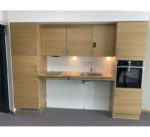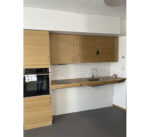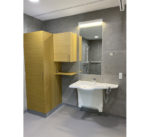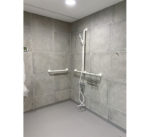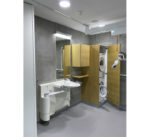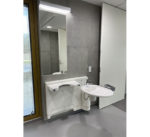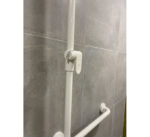The rehabilitation unit is designed to consider the patients’ physical and mental abilities. Therefore, it is important that the building is carefully thought out into every little detail.
The challenge
In Hammel, Region Mid-Jutland has built a rehabilitation unit specifically for people with delayed brain injuries. Every detail of the building is carefully thought out regarding how it can benefit the recovery and well-being of the residents and citizens in rehabilitation.
People with delayed brain injury can feel confused and suffer from memory loss and sensory disturbances. They can have problems learning new things or finding their way in a building, and things like taking a bath can become a challenge. Therefore, the rehabilitation unit should be designed to consider the patients’ physical and mental abilities.
”The building supports the patients’ well-being.”
The strategy
The 1.600 m2 extension should assist the patients in overcoming their challenges and increase their well-being. This is done by using natural light, bringing nature inside with plant walls and making the building inviting with regards to activity and training.
The kitchens are not only considered food stations where food is prepared. Instead, they are a possibility to train fine motor control. Stretching for something, holding on to kitchen utensils or making a light refreshment is also important training. Furthermore, they had to be designed to make it easy for the patients to use and operate the kitchen even if they had limited mobility.
Like the kitchens, the bathrooms should be fitted to support self-sufficiency for the residents. At the same time, they had to be a safe and comfortable setting for users and care workers.
”Both kitchens and bathrooms are easy to operate for patients with physical and mental impairments.”
The solution
The Department for Brain Injuries chose ROPOX solutions for the kitchens and bathrooms. The kitchens were fitted with a height-adjustable worktop without base units. It means that patients using a wheelchair can get close to the tabletop. This way, they can reach the sink, the hotplates and participate in cooking. The wall cupboards are also height adjustable and can be lowered to a height where seated users can reach the cupboard contents.
The bathrooms have a Swing Washbasin. It can rotate out from the wall allowing wheelchair users to wash their hands while seated on the toilet. This saves them from a transfer to the washbasin. It is also possible to move the washbasin to the corner to provide wheelchair users with maximum turning space. Furthermore, there are ergonomic support rails in the bath, which give the patients firm, solid grabs to hold on to.
The height-adjustable and ergonomic solutions make it possible to adapt the rooms for changing user needs and still provide solutions that support the patients’ well-being and physical abilities.
”Kitchens and bathrooms can be adjusted to changing user needs.”
If you want the story of Rehabilitation unit for Brain Injuries in Hammel as a print. Download pdf here.


